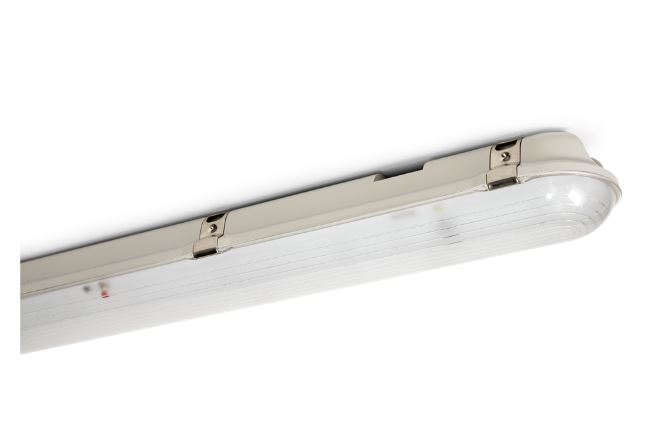When selecting lighting solutions for industrial or high-moisture environments, it’s crucial to understand the distinction between vapor lights and vapor-proof fixtures. Although the terms are often used interchangeably, they serve different purposes and are designed for different applications. Let's break down the key differences to help you choose the right solution for your needs.

What is a Vapor Light?
Vapor lights are bright, long-lasting fixtures that provide efficient illumination in large spaces, such as sports arenas, gyms, banks, and outdoor environments. They are designed to withstand challenging conditions, offering consistent and reliable lighting.
What is a Vapor-Proof Fixture?
Vapor-proof fixtures are engineered to prevent moisture, dust, and other contaminants from affecting the quality of light. These fixtures are often used in environments with high moisture levels, such as kitchens, food service areas, or industrial settings, where standard fixtures might not operate safely.
Key Differences Between Vapor Lights and Vapor-Proof Fixtures
The main difference between vapor lights and vapor-proof fixtures is the level of protection they provide against environmental factors like moisture and dust. Vapor-proof fixtures offer a more robust seal, ensuring that moisture and dust won’t penetrate the fixture, while vapor lights typically focus on providing bright illumination for large spaces without the same level of environmental protection.
Choosing the Right Fixture: Applications and Types
1. Jelly Jar Fixtures
Use: Small to medium-sized spaces such as commercial buildings, warehouses, and high-humidity environments.
Benefits: These fixtures are durable and feature a cage-style design, protecting the bulb from physical damage while providing reliable illumination in harsh conditions like high humidity or saltwater exposure.
2. Linear Vapor Tight Fixtures
Use: Installed on ceilings, soffits, or walls, these fixtures are ideal for garages, stairwells, car washes, and airports.
Benefits: These fixtures are available in multiple lengths, offering flexible installation options and an alternative to fluorescent tubes.
3. High Bay Vapor Tight Fixtures
Use: Large spaces with high ceilings (18 feet or more), such as hangars, warehouses, and hazardous product environments.
Benefits: High bay fixtures are designed for larger areas, offering powerful illumination and durability in tough conditions.
Are Vapor Tight Fixtures Waterproof?
While many LED vapor-tight fixtures are waterproof, it's essential to check the product’s Ingress Protection (IP) rating to confirm. Fixtures with an IP65 or IP66 rating ensure full protection against dust and water ingress, providing a truly vapor-proof experience.
LED Lights: Vapor-Proof and Steam-Proof Solutions
LED vapor-proof fixtures are specifically designed to withstand moisture and vapor, making them an excellent choice for challenging environments such as food service areas, tunnels, maintenance areas, and parking garages.
For sauna use, it's recommended to choose LED vapor-proof fixtures rated with an IP68 rating for steam protection and durability in extreme heat conditions.
FAQs About Vapor Lights and Vapor-Proof Fixtures
Are There Different Types of Vapor Tight Fixtures?
Yes, vapor-tight fixtures come in various designs to suit different applications. From the compact Jelly Jar to the extensive High Bay fixtures, each type is tailored to meet specific lighting needs in diverse environments.
Is There a Difference Between “Vapor Tight” and “Vapor Proof”?
Although often used interchangeably, the difference lies in the level of protection. While both types are designed to protect against moisture, vapor-proof fixtures often meet higher standards, including explosion-proof ratings, making them suitable for hazardous environments. Be sure to check the specifications and IP ratings before making a selection.
Why Do Vapor Lights Flicker?
Flickering in vapor lights can occur when the sensor detects reflected light or when the light is nearing the end of its lifespan. Ensure the fixture is correctly installed and in good condition to avoid this issue.
Conclusion
Vapor-proof fixtures are essential for high-moisture and industrial environments where safety and durability are paramount. Whether you're replacing incandescent or fluorescent lights, LED vapor-proof fixtures offer enhanced energy efficiency and long-lasting performance. Be sure to consult your building codes and specific environmental requirements to choose the most appropriate fixture for your space.



